Stakeholder Mapping: A Guide for Purpose-Driven Organizations

In this detailed, hands-on guide, we explore how stakeholder mapping can bring shared value to purpose-driven organizations.
A compelling case can be made for organizations of any stripe to understand and prioritize stakeholder needs in their operations, policies, and practices. This is especially critical when you need to:
- Design new products, services, projects, or programs
- Craft impactful and equitable long-term governance policies
- Create effective sustainability strategies or corporate philanthropy practices
Let’s explore what this means in more detail. Click the links below to go directly to that section:
- Understanding Organizational Stakeholders
- Poor Design, Bad Consequences
- Opportunities for Deeper Inclusion and Systems Thinking
- Ecosystem Maps vs. Stakeholder Maps
- Common Stakeholder Mapping Scenarios
- Facilitating an Impactful Stakeholder Mapping Workshop
- Example Stakeholder Mapping Workshop
- Stakeholder Mapping: Closing Thoughts
Otherwise, please read on . . .
Understanding Organizational Stakeholders
For traditional companies, stakeholder mapping might be in the service of a specific project, like a new product or initiative. In most cases, these efforts typically focus on stakeholders within or in close proximity to an organization, project, or department.
However, purpose-driven enterprises, and all Certified B Corps, consider broader stakeholder needs—like communities, workers, and the environment alongside investors, customers, or those who provide financial support.
By clearly understanding stakeholder needs, you can craft more inclusive, equitable practices that support needed economic, social, and environmental systems change. Moreover, you’ll become a better organization in the process.
Here’s how purpose-driven organizations can take advantage of this participatory design process.

Poor Design, Bad Consequences
Uber set out to build a tool that democratized access to cars. It ended up building a tool that further impoverished the poor. The service model was fine, but the financial model it used for growth could only ever be as ethical as the people who strove to benefit the most…Silicon Valley has exhibited total comfort with destroying the social fabric of humanity to make a profit.
— Mike Monteiro, Ruined by Design
Unfortunately, it has become commonplace that an organization’s products, services, policies, or programs cause problems—unintended or otherwise. Also, the larger the organization, the bigger and more wicked the problems become. Sometimes, this is a design issue. For corporations, it can also be a known by-product of maximizing shareholder value.
Uber, Big Tech, and Other Examples
For example, Uber continues to practice business model sleight-of-hand, though there are many others as well. Here are several examples from our industry:
- Living Wage: First, gig economy contracts in the tech industry can pay as little as $8 per day or, sometimes, in Amazon gift cards. Most also don’t offer any kind of social safety net like healthcare or other benefits.
- Fake News: Also, misinformation and disinformation are out of control. In some cases, organizations and large brands inadvertently fund terrorism without realizing it.
- Biased Algorithms: There are also countless stories about racism or gender bias in products that use artificial intelligence (AI). AI’s integration into so many products and services means these biases grow as the products do.
- Tech’s Environmental Impact: Finally, bitcoin and cryptocurrency mining produce nearly 100 annual Mt of CO2 emissions and nearly 30 kt of e-waste each year. This exacerbates ecological destruction and climate change. And it represents just one small slice of the internet overall. Ads have an even larger footprint.
Of course, it’s not just digital products that cause these wicked problems. You don’t have to look very far to find plastic, chemicals, fossil fuels, and other physical by-products of mass consumerism choking our waterways, polluting our air, and undermining the health and thrivability of millions of people.
In all these examples, some stakeholder group’s needs were not considered—or worse, intentionally ignored—during the product or service’s design and development process.
Solutions Within Grasp
Still, we have the knowledge to fix these issues…as long as we also have the will. One of the first steps toward better solutions is to more clearly understand stakeholder—not just customer or investor—needs. This can help us design better, more equitable solutions.
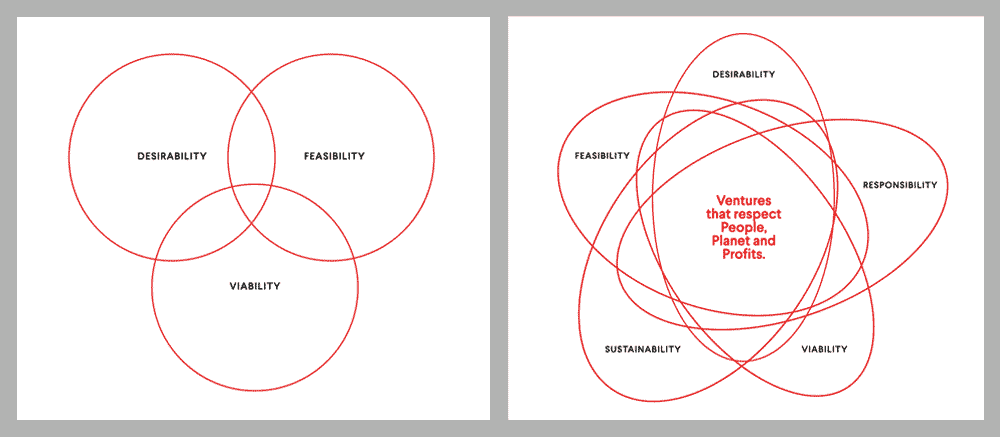
Opportunities for Deeper Inclusion and Systems Thinking
Customer centricity, sadly, is a problem rather than a solution. We know enough today, this far into the 21st century, to understand that we are facing systemic problems as a global community, the likes of which the world has never seen before. Looking at all these problems, we need our best and brightest minds to work on equitable, inclusive, sustainable futures and bring them into existence within a rather short time span.
— Sebastian Mueller, Stop Being Customer Centric
At first blush, stakeholder mapping may seem like a simple process—plot your project or organization’s stakeholders on a whiteboard and discuss their needs. Done deal, right?
In reality, your organizational ecosystem—and its corresponding actors—are complex and nuanced. This is especially true for larger organizations—the more stakeholders you support, the more complex and inclusive your solutions need to be. We must better understand the system before we can identify and frame a problem.
Systems thinking requires that we:
- Research data, events, and patterns that shape a system.
- Understand structures that drive problematic behavior within the system.
- Create a theory of change to address a problem.
- Explore a variety of solutions to a problem.
- Choose one that represents the best possible long-term solution.
- Test solutions incrementally to hone and improve them over time.
By involving stakeholders in these processes—especially in the service of new products, services, organizational governance policies, or ongoing sustainability strategies—you’re more likely to arrive at equitable and inclusive solutions.
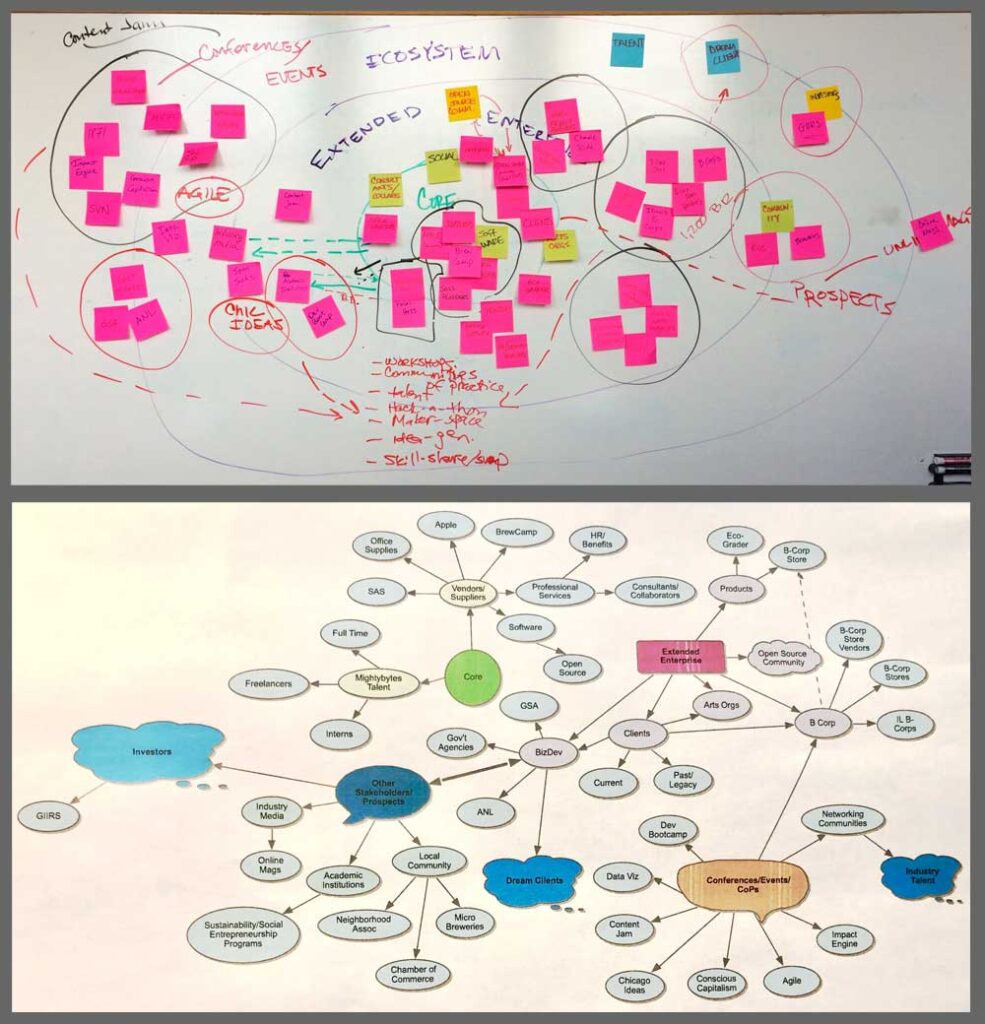
Ecosystem Maps vs. Stakeholder Maps
It is impossible to know the behavior of a system just by knowing the parts that make up that system. We have to dig deeper to understand the relationships between those parts and the impact they have on the system as a whole. That is a central tenet of systems thinking, and one we should never ignore.
— Steven Schuster, The Art of Thinking in Systems
In project discussions and workshops, we sometimes hear ecosystem mapping and stakeholder mapping used interchangeably. While both can help you better understand the systems that impact your organization, they are not the same thing:
- Stakeholder mapping tends to focus on humans—the actors mentioned above.
- Ecosystem maps focus on systems, networks, and connections.
- Sometimes it’s good to create both to better understand the driving effects, behaviors, and potential consequences of your actions.
Here are some ideas on how and when to use each.
Mapping Your Ecosystem
An impactful ecosystem mapping process can help your team:
- Understand the systems, networks, and connections that make up your organization’s ecosystem.
- Identify organizational strengths and weaknesses.
- Pinpoint gaps in your supply chain or ability to deliver products and services.
- Assess organizational risk, materiality, and resilience issues.
Mapping Stakeholders
Similarly, stakeholder mapping can help you:
- Better understand the potential consequences of a product, service, or program you’re considering.
- Identify equity, diversity, and inclusion gaps on projects.
- In tandem with customer journey maps, learn how customer-centric your organization truly is.
- Identify potential partners for creating collective impact.
- Test scenarios prior to incorporating new features into a policy, program, or product.
For this post’s purpose, we’ll focus primarily on stakeholder mapping, though we’re advocates for using both when applicable.
Common Stakeholder Mapping Scenarios
Purpose-driven organizations balance the needs of many stakeholders as they strive to create shared value over time. This makes the mapping process useful in many ways.
For example, you can apply stakeholder mapping to individual projects, programs, or the organization overall. Common applications include architecture, government services, transportation, business management, nonprofit programming, strategic planning, and digital products and services.
Let’s explore three common stakeholder mapping applications that are especially relevant to purpose-driven organizations such as Certified B Corps, nonprofits, and other social enterprises:
- Product design
- Organization design
- Sustainability

Stakeholder Mapping in Product or Service Design
Your company or social enterprise’s customers are your bread and butter. This is great except that marketing, product management, and UX design practices focus almost exclusively on meeting their needs, sometimes to the exclusion of others.
For example, in our experience, commonly overlooked digital project stakeholders include:
- The Disability Community: How accessible is your product for people with disabilities? In many countries, an inaccessible product can lead to a lawsuit and large fines.
- Underserved Communities: How are people in low income, low-bandwidth, rural, or other underserved areas impacted by your product or service?
- The Environment: How will you ensure that your product is as high-performing and low-carbon as possible?
- Multilingual Users: Do you need to provide content in multiple languages? How will you support and manage this over time?
- Diverse Backgrounds: Similarly, what product or service considerations must you make for Black, Indigenous, or People of Color (BIPOC) users? Women? LGBTQ+ users? People from different religious or cultural backgrounds? Are your personas as inclusive as they can be?
This is by no means a comprehensive list. Employees, seniors, suppliers, and many others have needs that are either overlooked—or sometimes intentionally ignored—by digital product teams.
Rationales for Neglect
Sometimes, stakeholders are neglected because a design or product team didn’t know any better. Other times, budget or project timing are used as excuses to forego stakeholder mapping or other discovery processes. This can put you on a fast-track to unintended consequences.
Ecosystem and/or stakeholder mapping can help product teams better understand broader stakeholder needs over the course of a product or service’s life cycle. Allot specific time and budget for these processes in your product roadmapping sessions, product/service design processes, and in ongoing care and maintenance.
For more details about common stakeholders on digital projects, see our post How to Get Stakeholder Buy-In for Your Digital Marketing Strategy.
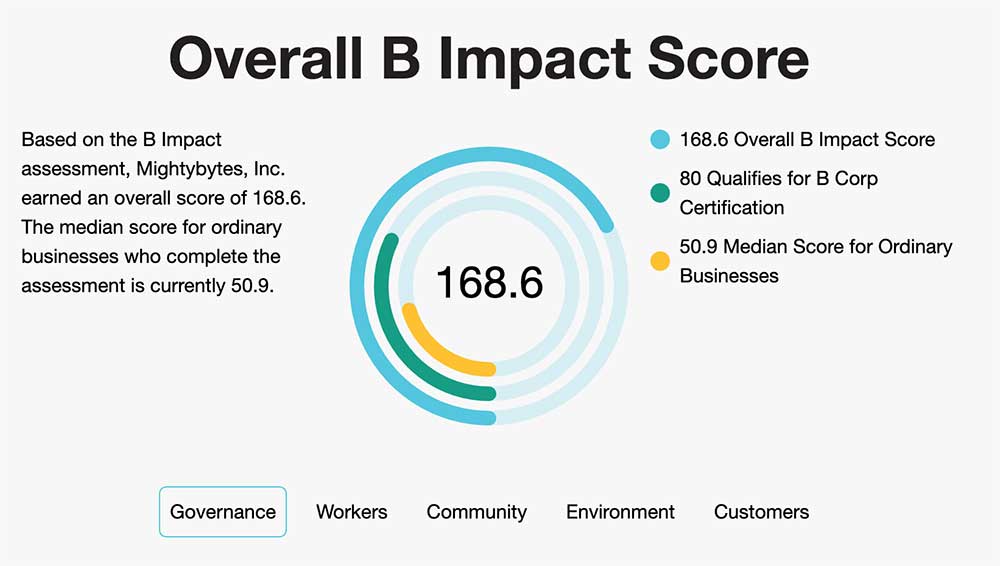
Stakeholder Mapping for Organizational Governance
Your company or nonprofit can also use ecosystem and stakeholder mapping to govern the organization through more equitable, inclusive policies and practices.
Scenarios to map will vary based on intent and the programs you wish to put in place. However, the practice itself should help your organization:
- Manage stakeholder expectations on organizational resources and capacity for various programs or initiatives.
- Understand which stakeholders are most at risk from existing or new policies or programs the organization hopes to enact.
- Craft more impactful organizational governance policies and strategies.
- Build capacity and more equitable, inclusive practices over time.
Any purpose-driven organization can employ these practices. However, they are especially relevant to Certified B Corps and other enterprises that want to measure their impact on stakeholders.
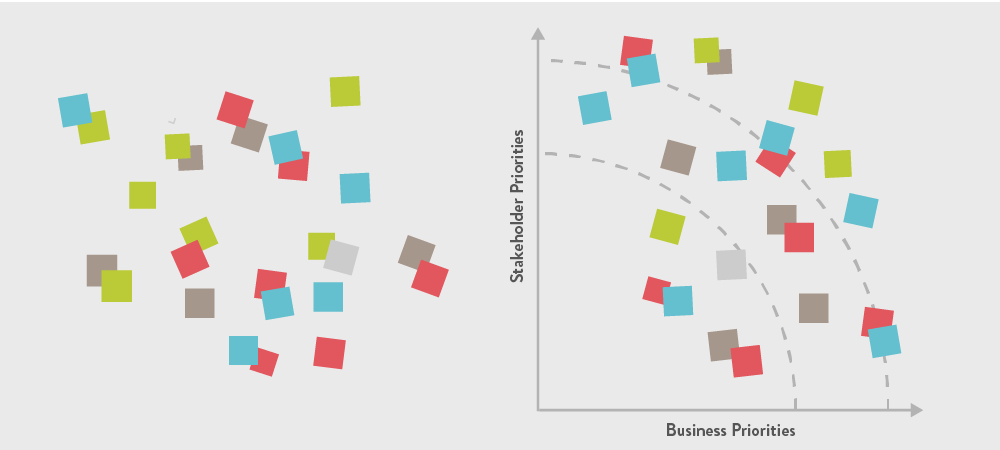
Stakeholder Mapping for Sustainability
Related to organizational governance, companies often conduct materiality assessments to better understand issues that might impact company financial performance if not managed well.
For example, if a company is found to have not identified—or worse, ignored—slave labor in its supply chain, it could lose business, which impacts revenue, profit, and stock price if the company is public.
Materiality assessments are often included as part of long-term sustainability planning. A materiality matrix shows a scatterplot of issues that internal and external stakeholders care about. Depending on how the materiality assessment is done, stakeholder group responses are typically weighted then combined as part of a report.
External stakeholder concerns are traditionally lumped together in said report. Specific concerns are rarely reported to company leadership in these assessments.
Myopic Reporting
Here’s the problem: Materiality matrices are used to set organizational goals and during long-term strategic planning. In turn, reports might gloss over specific stakeholder concerns, which could be dangerous.
Sustainability professionals inside companies and at consultancies have complained about the limited usefulness of materiality assessments for years. No better model has emerged. Adapting materiality assessments to include deeper ecosystem and stakeholder mapping might be a viable solution.
To this end, ecosystem and stakeholder mapping can help organizations:
- More deeply understand which stakeholders are most at risk from new policies or programs the organization hopes to enact.
- Create impact business models that align positive social and environmental impact with how your organization makes money.
- Devise clear resilience strategies around climate change, technological disruption, and other evolving circumstances.
In all of these scenarios, be sure to include key stakeholders in your workshops. If your decisions impact their livelihoods in some way, include them in the design process. This might mean facilitating multiple workshops or conducting ongoing research and stakeholder interviews to ensure concerns are captured and appropriately addressed.
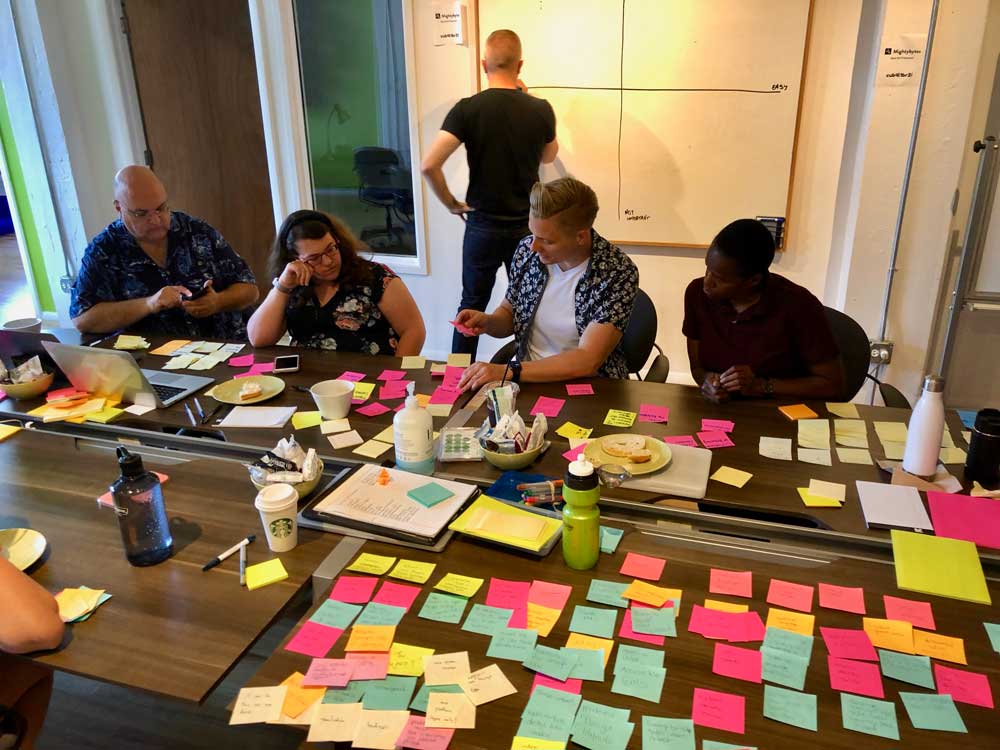
Facilitating an Impactful Stakeholder Mapping Workshop
Most effective stakeholder mapping efforts begin with some sort of research and collaborative workshop engagement. Facilitated workshops improve communication and foster better collaboration.
Who Should You Invite?
As part of the initial research, you’ll want to figure out who to include in your stakeholder mapping efforts. As noted in the intro, traditional stakeholder mapping often draws boundaries within an organization. Purpose-driven organizations tend to think more broadly about their stakeholder ecosystem. Plan accordingly.
Participants will vary depending on the workshop’s purpose. However, common traits include:
- Systems Knowledge: Some attendees should deeply understand the internal system you’re workshopping. Superficial or abstract understanding can lead to potentially biased results, so be sure to invite subject matter experts.
- Diversity: Also include diverse stakeholders with different perspectives. While some may have only cursory subject matter knowledge, they will bring fresh perspectives to the workshop. Strike a balance between these first two types of attendees.
- Customer Advocates: Invite people who will advocate on behalf of target customers or product users. While sometimes an internal stakeholder can play this role, it is preferable to include someone who actually represents the audience you want to reach.
- External Partners: Often, external stakeholders better understand issues like supply chains, strategic partnerships, community challenges, and so on.
- Product/Service Experts: If you’re workshopping a product or service, include product team members such as product managers, designers, customer service reps, marketers, salespeople, etc.
- Data Analyst: Not everyone in your group needs to be a data scientist. However, someone should understand how to work with the data your efforts produce.
If you can convene a team with the traits and skills noted above, you’re off to a good start.
Roles
In addition to stakeholder representatives, each workshop needs three dedicated roles:
- A Scribe—who takes notes and captures insights throughout the workshop.
- A Facilitator—who prompts discussions, asks questions, and keeps track of time.
- A Decision Maker—who breaks ties and makes the final decision when conversations are at a stand still.
These are critical to creating a game plan that works long-term for your organization.
Size of Group
If possible, keep your workshop team between five and ten participants. Any larger than that and the group becomes unwieldy. Any smaller and you might not get the insights or input you need.
Still, solving big problems requires multiple inputs. You might find it more useful to run several stakeholder mapping sessions then compare data after the fact. If you do this, allot time to distill insights from multiple sessions into one document. This will help you better identify common patterns between the groups.
Timeboxing
Set time limits on each exercise to give everyone a sense of urgency. Allow long enough durations to fully explore the exercise, yet keep them short enough to maintain engagement and continue workshop momentum.
In-Person vs. Remote Workshops
At Mightybytes, we historically preferred to run collaborative workshops in-person due to higher engagement levels and livelier, often more meaningful discussions.
However, since the COVID-19 pandemic, nearly 90% of businesses encourage their employees to work from home. For virtual collaboration, we have adapted most of our workshop exercises for online collaboration. In addition to supporting more diverse participation—not everyone can travel to an in-person workshop—this can help you facilitate more sustainable workshop activities as well.
Virtual workshop results are generally comparable to in-person workshops, though it helps to limit them to just a few hours and schedule multiple breaks. On-camera fatigue is a real thing.
You can also find specific stakeholder mapping templates in virtual collaboration tools like Miro, Mural, Zoom, or even Microsoft Word or Powerpoint.
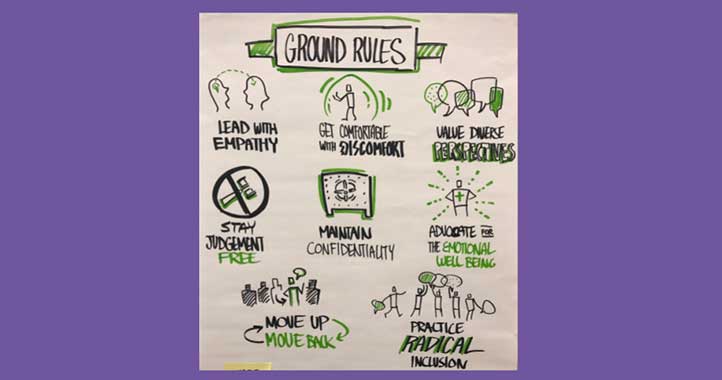
Research for a Stakeholder Mapping Workshop
As a rule of thumb, the more valuable data you bring to a co-creative workshop, through a research wall, a simple mind map, or a research report, the more representative your outcome will be.
— This is Service Design Doing (Methods, p. 48), O’Reilly Media
Before the workshop, prepare attendees by creating clarity on goals, desired outcomes, and so on. Conduct and/or share research to inform better workshop participation. Give participants enough time to absorb and understand the research so they can join the workshop prepared. If applicable, share rules of conduct prior to the workshop as well.
You might already have good research to share. You might not. Depending on which scenario your workshop is intended to serve, you may need to research stakeholder needs in greater detail.
Just Enough Research
When preparing for any big project, don’t fall down a research rabbithole. Ensure everyone has the information they need to maximize their workshop experience. Also, distill information down to key points. Know when to stop researching and start workshopping:
- Stick to topics with workshop relevance. While understanding the systems you plan to map is important, don’t expect workshop attendees to know everything ahead of time.
- Similarly, don’t overwhelm attendees with too much pre-workshop information. Otherwise, they’ll just glaze over, or worse, won’t read your materials.
- Create an “executive summary” style report for attendees to read ahead of time. Include links to more information if they want to dig deeper, but don’t require it.
- Finally, don’t forget that your best insights should come from the workshop itself. By overplanning, you could undermine the value your workshop brings.
Also, keep in mind that you can always run another workshop at a later date if you need to update your learning. Stay focused.

What’s Included in a Stakeholder Mapping Workshop?
What you include in your stakeholder mapping session depends on what you hope to get out of it. Set clear goals. Understand what you hope to learn.
Typical stakeholder mapping workshop exercises include:
- Defining Stakeholders: Who are the actors in the ecosystem you’re trying to visualize?
- Affinity Mapping: To better understand the relationships between stakeholders and potential risks involved, clustering stakeholder groups based on common needs or interests can be useful.
- Interest and Impact: Arrange stakeholder types on a grid according to their influence or impact on a project and their potential for getting involved.
- Priorities: Define priorities and action items based on where stakeholders landed on your grid.
Example Stakeholder Mapping Workshop
If you’re just getting started with stakeholder mapping, try this four-part workshop. Feel free to adjust the exercises below or add new ones to suit your specific needs based on what you hope to accomplish.
1. Define Stakeholders
This first exercise is a blue sky brainstorming activity that can be done in tandem with an ecosystem mapping exercise or separately.
At the start of this exercise, briefly discuss research findings and set the stage so everyone understands goals, process, and so on. Also give attendees a chance to ask grounding questions.
Next, ask everyone to identify as many relevant stakeholders as possible, one per sticky note. Place these on the left side of a physical or virtual whiteboard. Ask attendees to describe the stakeholders they added to the board and include why they think each is important.
Encourage workshop participants to dig deep. If you have completed an ecosystem mapping exercise, reference that. Who from the systems, networks, and connections that make up your business ecosystem should be represented on your stakeholder map? Who isn’t included but perhaps should be?
Sometimes, question prompts are useful to jumpstart the exercise:
- Representation: Communities, coworkers, customers, and the environment are obvious stakeholders. Who’s not represented within those groups? How might you make your stakeholder map more inclusive?
- Subgroups: What subgroups of each mentioned above should you include?
- Affinity: What commonalities do stakeholder types or groups share? Discussing common traits can help attendees identify related stakeholders they hadn’t initially considered.
- Ancillary Stakeholders: Are there other secondary stakeholders you haven’t considered who might be impacted by your strategy?
When you’re done adding stakeholders to the whiteboard, ask workshop participants to identify primary stakeholders—those who are most important to your organization. Use dot stickers or emojis for votes.
This process builds consensus and helps attendees start thinking about prioritization. Just be careful that your efforts moving forward don’t neglect secondary or ancillary stakeholders.
2. Affinity Mapping
Once your team has identified as many stakeholders as possible, assess the map for common stakeholder characteristics. Here you want to cluster stakeholders into groups based on affinities, common traits, interests, etc. If useful, visually identify/label groups to indicate commonalities.
Consider these questions:
- Are there redundancies? Can you delete stickies without undermining the map’s integrity?
- How might stakeholders influence each other? Are there overlaps to identify?
- What are the potential risks? What could go wrong if your list is incomplete or you don’t effectively engage the right stakeholder groups?
- Has the clustering process revealed any new insights about who impacts your project, initiative, program, etc.?
Capture any insights during this process and take photos of your whiteboard in this state, as you’re going to move stickies for the next exercise.

3. Map Interest and Impact
Next, this exercise will help your team understand how each stakeholder group might impact your efforts. Create an x/y grid on your whiteboard, labeling the axes as Impact and Interest.
Move or copy stakeholder stickies from the left side of your whiteboard onto the grid based on:
- Impact: How impacted are they by the problem you’re trying to solve? What might their impact be if they were involved in a solution? What are the risks if you don’t include them?
- Interest: What is their likelihood of engaging with your solution? How might you ensure their involvement is productive, proactive, and ensures their needs are met and voices heard?
When done, you should have a scatterplot of stickies across your grid. You’ll want to prioritize those who rank high on both impact and interest while also discussing how you’ll engage those with lower impact or less interest.
4. Define Action Items
Finally, devise an action plan based on your priorities. What is the next step? The step after that? Any workshop is only as good as what you learn from it and—more importantly—how you transform learning into action. How will you turn your insights into long-term success?
We have found these things useful:
Post-Workshop Report
Workshops typically generate many insights and action items. Distill those into an easy to understand report that quickly visualizes what you learned with key takeaways.
You can also attach all your notes, sketches, and so on. However, the primary takeaway is an executive summary that quickly and clearly conveys next steps.
Other Post-Workshop Activities
Related, here are a few other activities that can help you ensure your stakeholder mapping experience finds life beyond an initial workshop.
- Stakeholder Advisory Committee: First, establish a stakeholder advisory committee that meets regularly to keep your project on track.
- Vision Backcasting: This reverse-engineering exercise helps you visualize a desired end or future state, then work backwards to understand possible steps to success. This process can also be useful for analyzing risk and resilience.
- Stakeholder Interviews: Schedule stakeholder interviews to validate or refute any assumptions attendees may have made about stakeholders during the workshop.
- Scenario Testing: Similarly, ask interview subjects to act out “what if” scenarios that help you identify potential risks or unforeseen circumstances.
- Product Roadmapping: Finally, if your stakeholder mapping session is in the service of a new product, schedule a product roadmapping workshop. A stakeholder map shouldn’t replace a product roadmap. However, data from one can positively inform the other.
Stakeholder Mapping: Closing Thoughts
When … designers or researchers create predetermined solutions and then try to validate them through an “inclusive” or “participatory” research process, at best we design something that prioritizes our own ideas, and at worst we risk disrespecting and harming people we are intending to design with. More than any technique or tool, we need to ground our work in a belief that people matter—their experiences, ideas, and aspirations can and need to be centered genuinely and rigorously throughout the design process in a way that is not extractive, transactional, or symbolic.
— Adriana Valdez You, To practice inclusion, we need to let go of designer-centered design
In conclusion, stakeholder mapping isn’t a panacea for all organizational problems. It is entirely possible—even likely—that you will miss something regardless of how inclusive you try to be.
However, prioritizing stakeholder needs and continuous learning throughout design and business processes can help you measurably diminish potential unintended consequences and craft more equitable and inclusive solutions.
Also, for purpose-driven organizations, these principles must be locked into your operational DNA. Start with clearly understanding stakeholders, then designing and testing solutions that better suit their needs. Hopefully, some of the resources and practices shared in this post will help.
Digital Carbon Ratings, now in Ecograder.
Understand how your website stacks up against industry carbon averages with this new feature.
Try Ecograder


